Greetings friends, I hope you are well, and thanks for stopping by to visit.
First of all, let me say how thankful I am that there are individuals and record labels who recognize the musical treasures that fall within the early eras of the recording arts, the acoustic (1877-1925) and electrical eras (1925-1945) of recording, and are making those grand musical performances on 78 records available to contemporary listeners by transferring them to digital so they can be listened to on a CD player in a contemporary high-fidelity audio system, opening up access to some of the greatest musical performances ever recorded to new generations of listeners.

My 100 year old gramophone.
I went out and bought a 100 year old gramophone so I could hear what 78 records sounded like to listeners back in the 1920s, which was the time period when my parents were born, and the time period when my grandparents were listening to 78 records on their gramophones in their own homes.
In fact, the 78 records I have are from my grandfather Sailor's collection, whose family was originally from the Isle of Mann.
Playing my grandfather Sailor's 78 records on my old gramophone gave me insights into what the music lovers of the 1920s were hearing, and I have to say it was pretty satisfying to hear and experience.
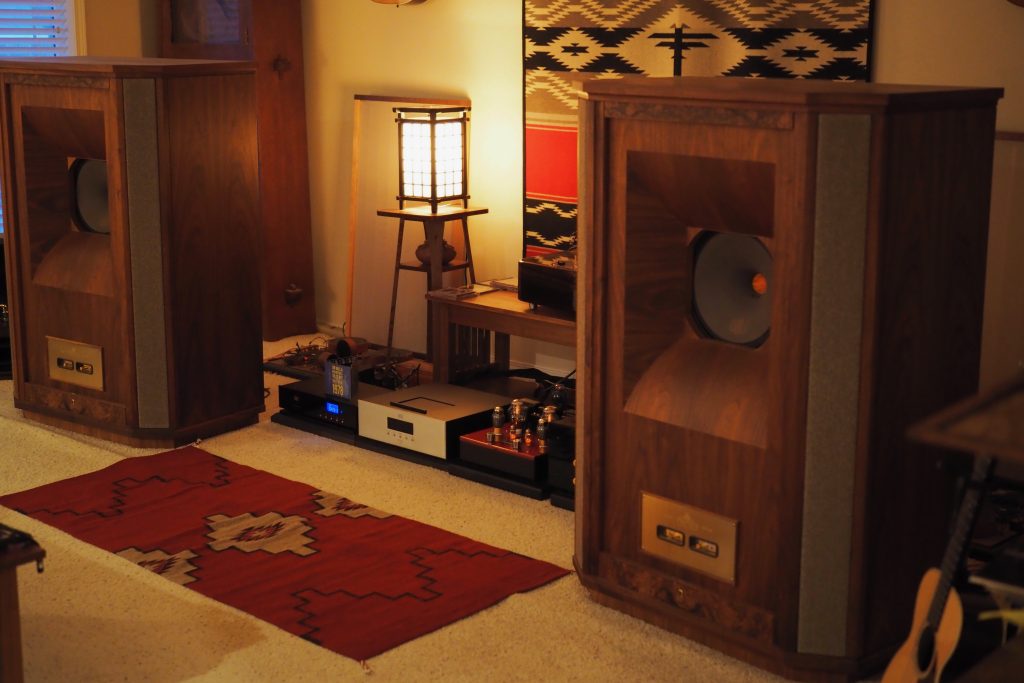
System photo from December 4th.
As fun and nostalgic as listening to my old gramophone playing 78s is, listening to 78 transfers to digital on - at this very moment - my Tannoy Westminster Royal SE loudspeakers powered by the Triode Lab 45 EVO SET integrated amplifier with an Audio Note (UK) CD 4.1x CD player as a source, is so much more satisfying. Remarkable even!
The 78 transfers to CD I have played on my high-performance audio systems are so musically brilliant it can be hard to articulate fully. The emotional impact from those performances are off the scale, and in what might surprise many listeners, they provide a level of emotional impact that exceeds 90% of the best recordings made during the magnetic era of recording (1945 to 1978) and the digital era of recording (1975 until now).
When you write about audio, every new component for review introduced into your system requires a complete system re-voice to make sure you are getting the best possible performance out of that new component.
I'm referring to my iterative voicing process as my 'adventure voicing' these days, which if you've read my article, First Listen: The Audio Note (UK) CD 4.1x Level 3 Red Book CD Player!, I've provided an overview of the process using the Audio Note (UK) CD 4.1x CD player as an example.
My 'adventure voicing' is an iterative voicing process whose focus is achieving the best overall audio system voicing across the broadest range of music possible, inclusive of all the historic eras of the recording arts: the acoustic era (1877 to 1925), the electric era (1925 to 1945), the magnetic era (1945 to 1975), and the digital era (1975 to present), so that the final system voicing allows for maximum high-fidelity listening adventures for all recorded performances of music ever made.
In that First Listen article, I got started with the first step of my 'adventure voicing' process of optimizing the performance of the CD 4.1x in my audio system, using transfers to CD from magnetic tape.
I started with an excellent performance of live music by Jim Hall and Red Mitchell that was recorded on magnetic tape, then transferred to digital for CD, but now it's time for the second step, listening to 78s transferred to CDs from the acoustic and electrical eras of the recording arts.
I've found 78s to be the 'single-ended-triode' amplifiers of the record world, as the mid-range of those performances are just out of this world, even though there isn't a lot in the bottom octave on most recordings from the acoustic and electrical eras of the recording arts, or above 6000 Hz on most of them, and some of them are a little noisy, but they are still astonishing works of the recording arts and examples of magnificent music.
The secret to enjoying 78 transfers fully is correctly voicing one's system. If your system voicing is off, - e.g., if you only voiced your system with music recorded during the magnetic and/or digital eras of the recording arts, your system may very well crash and burn playing 78 transfers - you'll have a little work to do to get your audio system voicing sorted out.
As a relevant example, I got the voicing of the CD 4.1x dialed in for my system on a CD transfer from magnetic tape, but when I starting playing 78 transfers it was clear that I had more voicing work to do.
You'll know when you get the voicing right, as great recordings from the magnetic and digital eras of recording will still sound fantastic, and so will those transferred from 78s recorded during the acoustic and electrical eras of the recording arts.
When I started playing the 78 transfers to CD I am going to tell you about in a moment, I quickly realized the voicing I started with in my first iteration wasn't cutting it. The 78 transfers sounded thin, distant, and overly noisy, with that particular setup.
To start my second step of 'adventure voicing', I changed out the interconnects that worked so well with CDs that were transfers from magnetic tape - the exotic Acoustic Revive 'Absolute' silver-copper hybrid interconnects - to those grand old recording studio standards, the Belden 8402 tinned-copper microphone cable interconnects.
That simple and inexpensive interconnect change resulted in a complete transformation of the voicing for playing CDs sourced from 78 records.
The surface noise of the 78 records now receded into the background to a level that one might think was magnetic tape hiss if one didn't know better. The thinness disappeared, and the performances were fleshed out in a flesh & blood naturalness that puts them into a category that rivals that of the best of magnetic era recordings. A remarkable transformation for so little effort.
And guess what? Recordings from magnetic tape transferred to CD still sounded great. Perhaps a little resolution was lost, and a touch of presence, but the increased range of recordings that became listenable expanded significantly. An acceptable exchange from my 'all-music' perspective.
I've got a couple of gems from Nimbus Records 'Prima Voce' series of 78 transfers to CD to tell you about today, as well as a few other gems, if time allows.
First let me mention a reminder of how Nimbus Records does their 'Prima Voce' transfers, which is rather unique.
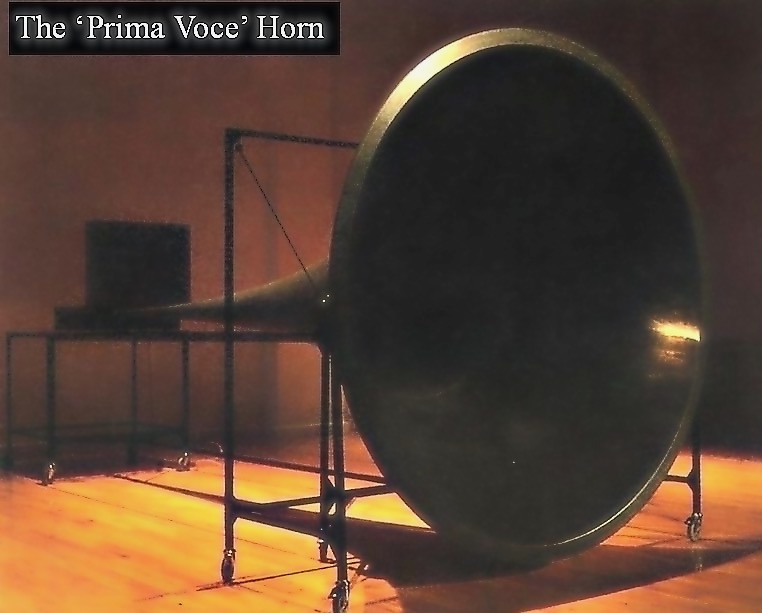
Photo courtesy of Nimbus Records.
The Nimbus Records Prima Voce series represent a more stylized approach to transfers from 78 records to CDs, in that the 78 records are played back over a large custom horn and re-recorded, rather than transferred directly from the 78 records.
In Nimbus Records own words:
"Unlike other companies who tend to use modern electric pick ups to transfer their records we prefer to play our 78s using an acoustic horn gramophone. In doing this we produce a warm, vibrant and extremely lifelike sound which requires very little processing (only the worst clicks are removed) before issue. In fact the only 'electric' part of the whole playback process is the Technics SL-15 turntable which is used to ensure that the record is running at the correct speed."
"Our purpose built horn gramophone is no more than a development of machines that existed in the 1930s. Not faced with the problem of fitting the apparatus into an average sized living room we have made it much longer (its length is nearly six metres) and changed the shape of the horn's curve. These adaptations enable extreme frequencies of the original recording to be heard more clearly and provide us with a more balanced sound. The thorns which we use are made of a pliable wood and will quickly shape themselves to the fit snugly into the groove of a 78. It is unlikely that a thorn will last much longer than one side of a record before the quality of the sound begins to deteriorate. Sections of the records we are transferring (usually the ends) are therefore often played more than once and the best of the different takes are matched and joined in the editing suite."
"In playing the records in the Performing Arts Centre of the Nimbus Foundation we are virtually allowing the artists a second chance to make their recordings, this time in a more generous acoustic. The conditions under which many of these artists recorded were often cramped and difficult and one often wonders what chance the voice really had!"
"The microphone which we use is exactly the same one that we use to make the majority of our ambisonic recordings. It is positioned so that it is central to the aperture of the horn and its distance from the horn is varied depending on the singer's voice and the quality of the records we are transferring. Changes of microphone position are kept to the bare minimum during a session unless the original recordings are radically different. No mixers, faders or processors are involved. A session in the Hall might last for anything up to a week during which we usually hope to transfer a minimum of two discs."
"Despite the application of thought and effort and the amount of time involved with each Prima Voce release, the basic principle remains very simple: we play the records the way they were intended to be played and record the results in much the same way that all our recordings are made."
For more information on the Nimbus Records Prima Voce approach to these transfers you can read more about it at the Wyastone Estate website HERE.

The Spirit of Christmas Past, from the Prima Voce series of 78 transfers.
Given we are well into the Holiday Season, let's start with The Spirit of Christmas Past, and allow me to wish you all a Happy Holidays as well!
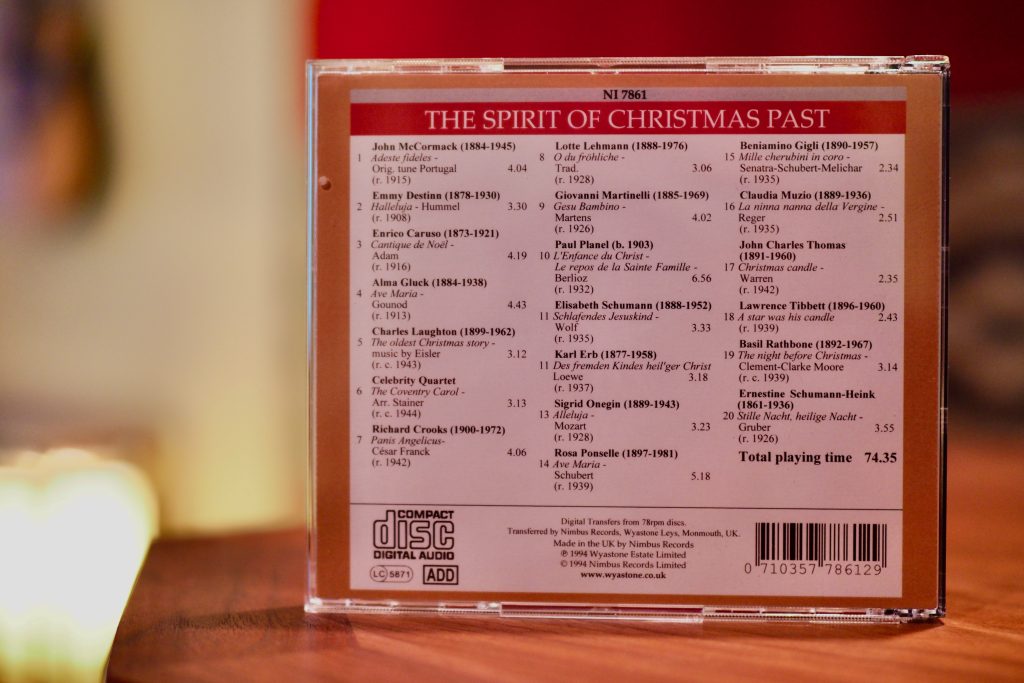
The Spirit of Christmas Past, from the Prima Voce series of 78 transfers.
The Spirit of Christmas Past has a playing time of 74 minutes and 35 seconds, and includes twenty superb musical performances from some of the greatest musicians of the acoustic and electrical eras of recording.
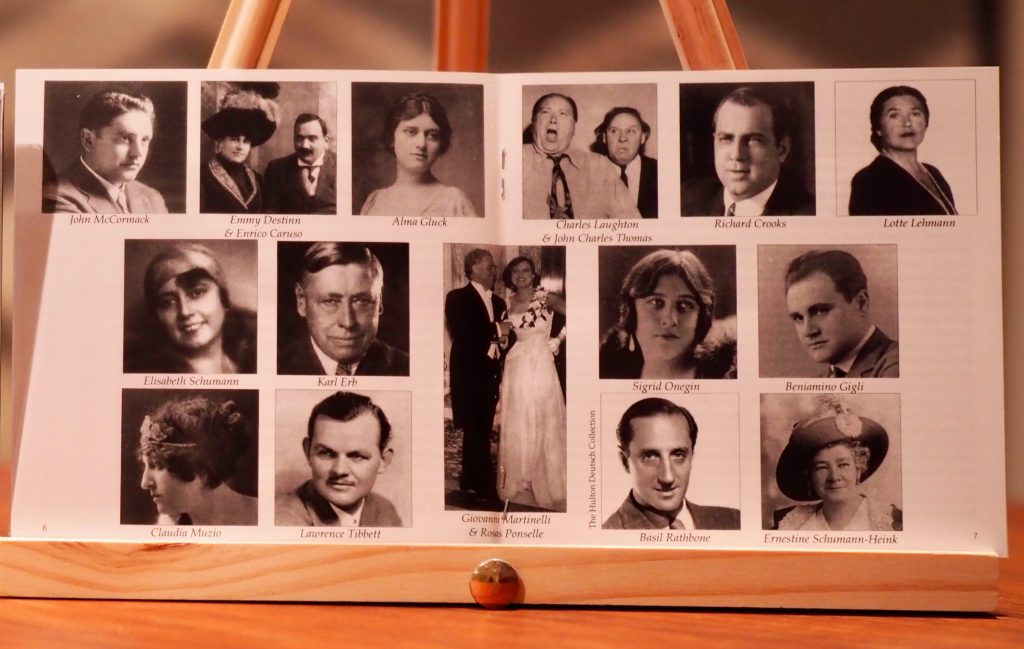
The Spirit of Christmas Past, from the Prima Voce series of 78 transfers.
Presented in a big, rich, warm, and dimensional sound, there are brilliant performances by John McCormack, Emmy Destinn & Enrico Caruso, Alma Gluck, Charles Laughton & John Charles Thomas, Richard Crooks, Lotte Lehmann, Elisabeth Schumann, Karl Erb, Claudia Muzio, Lawrence Tibbet, Giovanni Martinelli & Rosas Ponselle, Sigrid Onegin, Benjamin Gigli, Basil Rathbone, and Ernestine Schuman-Heink.
You may only recognize a couple of the names of the artists listed, but trust me, to round out your music library and your knowledge of these great artists from the early eras of the recording arts, you'll want to become much more familiar with each of them.
It's certainly my hope that I live long enough to explore all of these available transfers from 78 records, as there are untold amounts of musical riches available to hear that many of us have never even been aware existed.
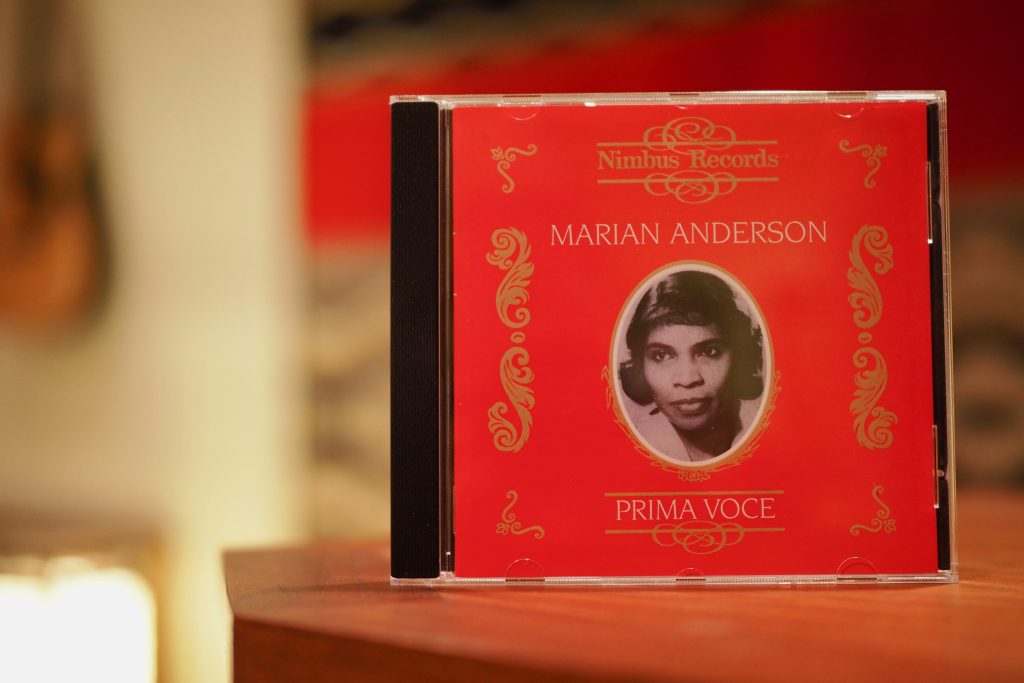
Marian Anderson on Nimbus Records, Prima Voce.
The great Marian Anderson. Marian Anderson (1902 to 1993) was an American contralto, who "... performed a wide range of music, from opera to spirituals ... "(Wikipedia).
On this Prima Voce CD of Marian Anderson there is a nice sampling of her performances, from oratorios to spirituals, and they are brilliant!
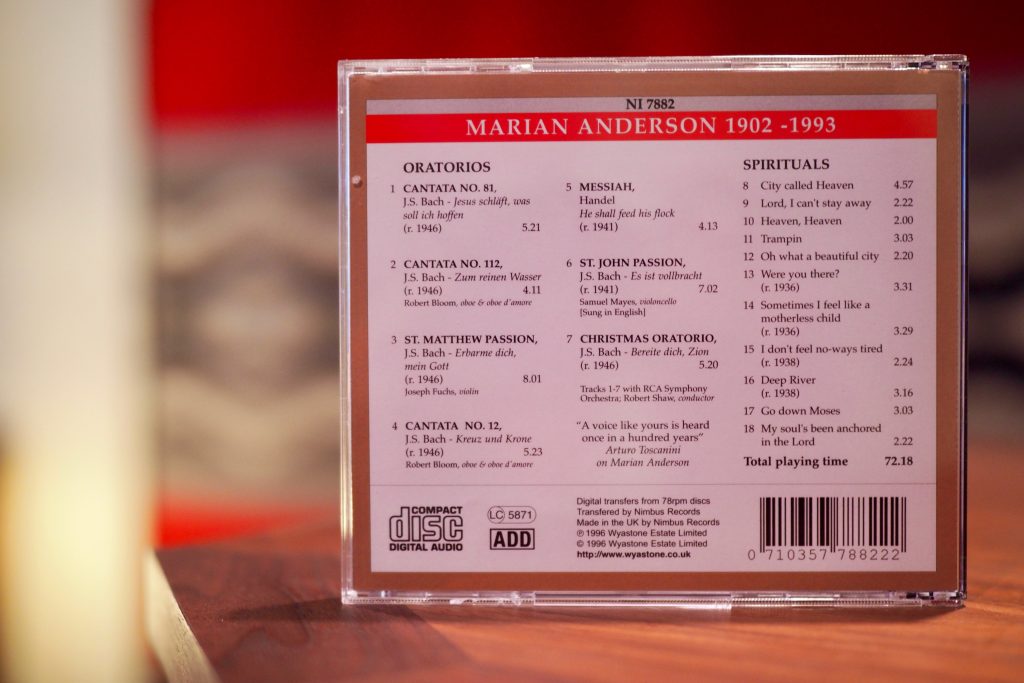
Marian Anderson on Nimbus Records, Prima Voce.
There's that Nimbus Records Prima Voce big, rich, warm, and dimensional sound that I find so enticing, but more importantly the Marian Anderson's performances are breathtakingly great!
In the liner notes it mentions, "On her farewell concert at Carnegie Hall in 1965, Harold Schoenberg wrote in the New York Times that an epic in American culture had come to an end ... "the woman who has met kings and queens and several presidents, who has sung the Marseillaise for Charles de Gaulle, who must be on of the few women in the world to have been sent a roomful of roses - six hundred of them.""
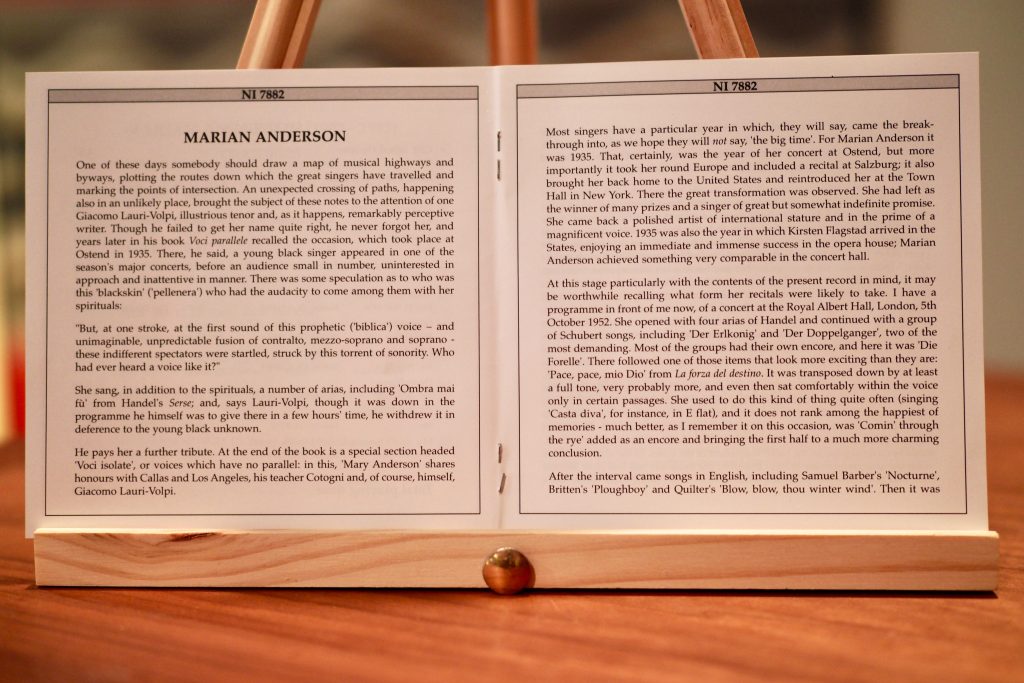
Marian Anderson on Nimbus Records, Prima Voce.
Here you can enjoy a beautiful selection of Marian Anderson's repertoire transferred from 78 records in Nimbus Records Prima Voce's big, rich, warm, and dimensional sound during her prime. A must have!
I highly recommend the 78 transfers albums of The Spirit of Christmas Past and Marian Anderson from Nimbus Records Prima Voce series - they're magnificent!
Well, I have a lot more to tell you about, but I've run out of time to do it this morning, so check back for more.
As always, thanks for stopping by, and may the tone be with you!



























